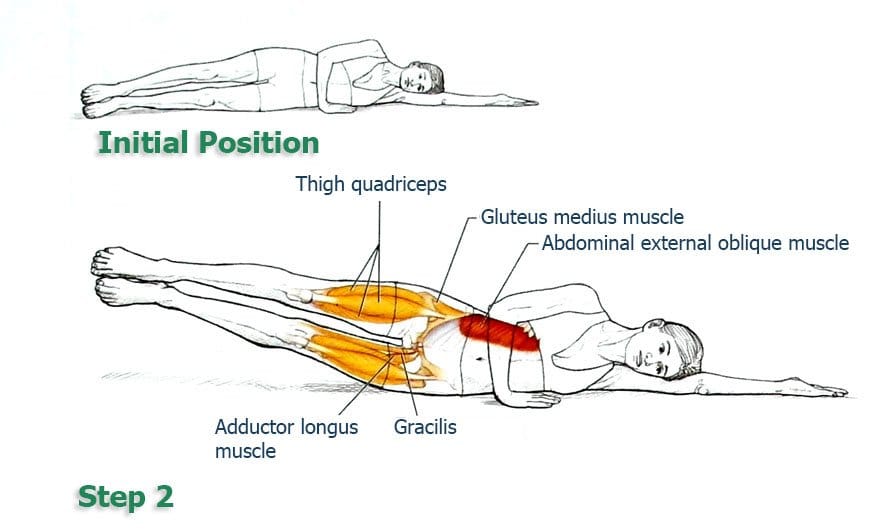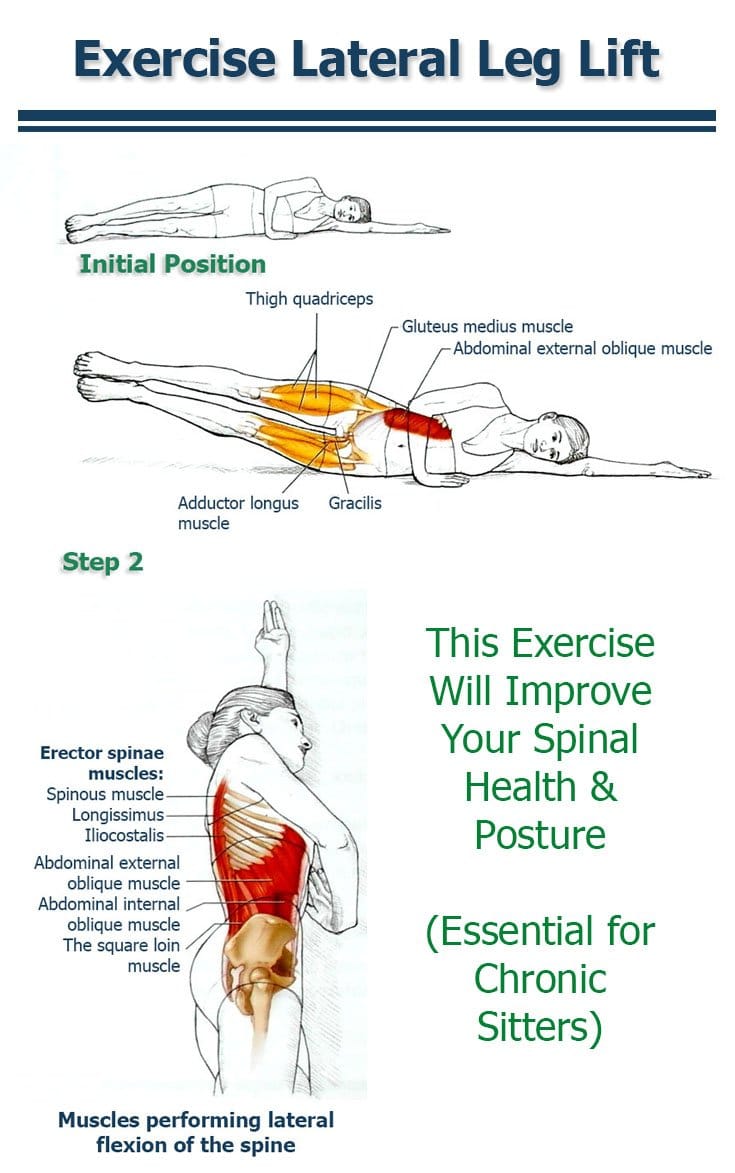After the work we did with our series of back and spinal exercises, we return to the topic with a simple, but important exercise for spinal health – Lateral Leg Lift. Anybody who tends to sit a lot will eventually experience problems and symptoms associated with prolonged sitting, like reduced spinal flexibility and fragile back muscles, resulting in bad posture and increased risk of spinal injury. Weak back muscles do not have the strength to properly carry your body while flexibility in your back is important for most daily activities and sports.
Increasing the strength and flexibility of the muscles surrounding the spine can only be accomplished over time and can be a very difficult or very easy task depending on your body type. Today’s exercise focuses on spinal lateral flexion. Mastering this particular movement will not only better your strength and flexibility, but also significantly lower the risk of injury, whether we are talking about back muscles or the spine itself in both everyday activities and athletic performance.
Before you start, take note that it’s important to pay close attention to the technique and precision in performing Lateral Leg Lift so that both adequate strength and the desired movement patterns (flexibility) are developed. Wrong execution will fail to produce wanted results and may even result in injury.
Also, If haven’t checked our full back & spine series of exercises, you can find them here:
- Exercises to improve your posture and bring relief to your back and spine;
- Exercises to improve flexibility and movement precision of your back and spine;
- Abdominal exercises for spinal and core movement and stabilization.
Exercise Lateral Leg Lift

The main movement here, spinal lateral flexion, involves bending the spine directly to the side. This movement requires a finely coordinated concurrent contraction of:
- muscles located in the front core, mainly the obliques and iliopsoas;
- muscles located on the side, like the quadratus lumborum; and
- muscles located on the back, including the erector spinae, semispinalis, and components of the deep posterior spinal group (as shown on the illustration above).
Initial position. We start by lying on one side, with the bottom arm and both legs straight and in line with the body. Your head should rest on the lower arm. The top arm is bent, with the palm on the mat in front of you and the fingers pointing towards the head. Now:
- Breathing out, raise both legs (as if there were one unit) just above the mat, and then continue lifting them higher by laterally flexing the spine;
- Breathing in, lower the legs to the same point above the mat (make sure you don’t touch the mat). Repeat the sequence 10 times then lower the legs to the initial position. Now lie back on the other arm and perform the same sequence on the opposite side.
Make Sure To:
- During step 2, keep moving your legs as one unit by using the hip adductors to pull the bottom leg up against the top leg, while the hip abductors of the top leg raise the top leg. The knee extensors should keep both knees straight while the plantar flexors keep your feet and toes pointed;
- In the beginning focus on the movement occurring at the hip joints while your torso stays stationary, with the waist lifted off the mat. Then, to lift the legs higher, emphasize activating the lateral flexors of the spine by bringing the side of the pelvis closer to the rib cage on the upper side of the body while the legs reach up toward the ceiling. During this step, the waist will lower toward the mat as the spine laterally flexes and the pelvis laterally tilts;
- The hips must remain stacked, with the top hip bone vertically above the lower hip bone. You should avoid rocking backward or forward as your legs move;
- To better achieve the correct form and movement, imagine yourself as an archer’s bow being pulled tight. As the legs arc up toward the ceiling, they create a bow shape together with the torso.

Additional Notes
Although this exercise will tone up your hip adductors and abductors, the primary purpose here is to strengthen the lateral flexors of the spine and develop essential skills for spinal and core stability.
If you maintain the optimal form during the exercise, the obliques do most of the work, with the back muscles activating just sufficiently to keep the torso from flexing forward. However, a common mistake is overusing the back muscles, causing the lower back to arch. In such cases, allow the feet to come forward slightly, and emphasize pulling the abdominal wall inward so the body is in a slight banana shape when viewed from the top to facilitate a better use of the obliques.


